
The plum pox virus (PPV) or Potyvirus sp. is a viral disease that affects stone fruits, especially those in the Prunus genus, such as plums, peaches, nectarines, apricots, almonds, and cherries. Sharka disease is another common name for PPV. There are six strains of PPV, of which, the D strain or Dideron strain has been identified in New York State. The D strain primarily infects peaches, nectarines, apricots, and plums.
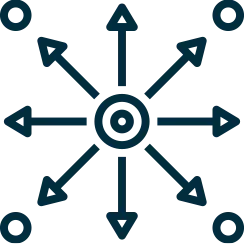
Plum pox virus has spread to many countries worldwide. The virus may be spread long distance by the transplant of infected plant propagations, nursery stock, or illegal traffic. Insufficient monitoring of stone fruit before transporting the fruit from one location to another is also a cause for spread. Some fruit may appear symptomless initially and may accidentally pass inspection. Plum pox virus spreads over a short distance using aphid vectors when sucking the sap of an infected plant and transferring it to a healthy plant. The D strain of PPV is not known to be seed-transmitted.

It is estimated that the plum pox virus will have a $600 million per year economic impact on the plum, peach, and apricot industry worldwide (Fuchs et. al. 2008). A study from 2006 estimates the economic loss in previous years to the peach industry from the PPV D-strain in the United States and Canada to be about 4.8 million euros (about $6.1 million USD) from the removal of 264,000 trees in Canada and 190,000 trees in Pennsylvania (Cambra et al. 2006). Widespread outbreaks of the virus could lead to increase cost for consumers due to a decline in production and exportation.

Symptoms of plum pox virus may vary depending the virus strain, cultivar and various environmental factors. Symptoms may not be seen until three or more years after infection. Vein yellowing or light green to yellow rings or blotches may form on the plant leaves. Some leaves, such as those of peaches, may exhibit crinkling, curling, or puckering. Leaf symptoms are typically seen more at cooler temperatures in the spring and fall seasons.
Some larger flowers may exhibit color breaking, such as those on peach trees. The fruit of infected plants may have pigmented rings or patterns (seen in peaches), or look misshapen or deformed and turn brown (Apricots) or get rings or spots as well as discolored reddish flesh (Plums). In most cases, fruit yield and quality will decrease significantly.
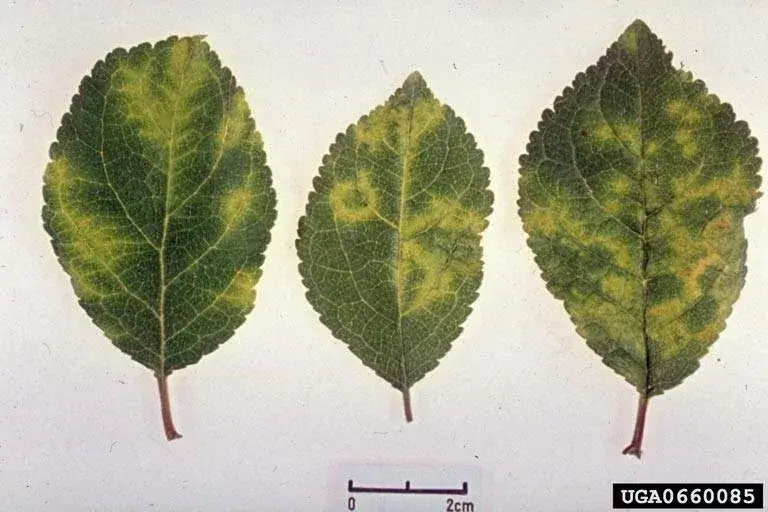
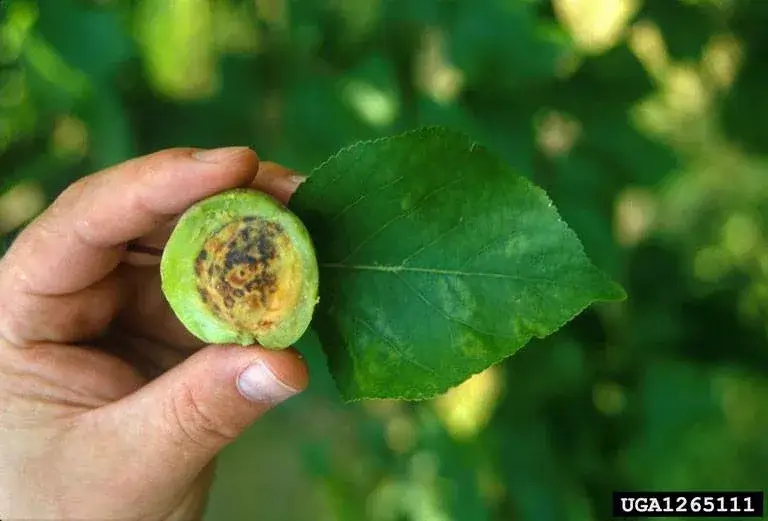
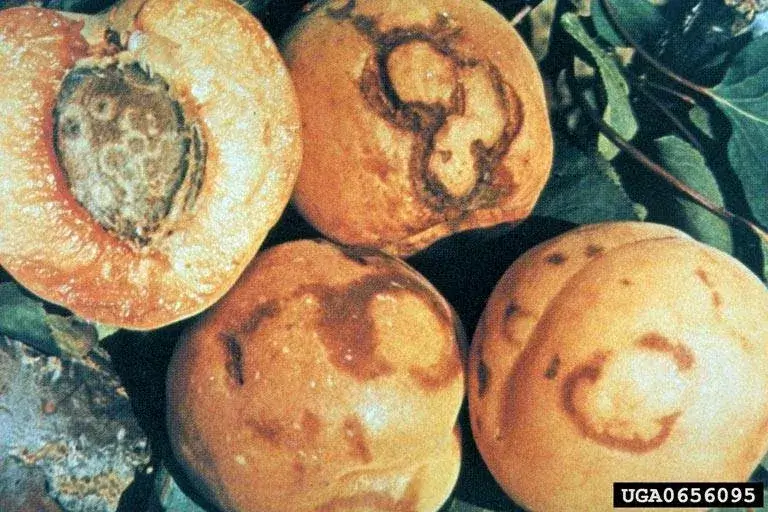


Careful regulation and control of plant material is important so that only pathogen-free material is used commercially. If you are a grower or a nursery make sure you are buying certified plant materials that have been virus tested. Also, extensive surveys, removal, and destruction of infected trees may help to prevent the disease from spreading further.
The PPV Lab at the New York State Agricultural Experiment Station in Geneva, NY works with the New York State Department of Agriculture and Markets and USDA-APHIS to screen Prunus trees for the plum pox virus in New York State.

Early detection of plum pox virus is important because there is no cure once it gets established in an orchard. Once infected, trees with the virus, and those in a 50-meter radius, need to be removed and destroyed to eradicate PPV. This is important because PPV does not kill trees. If the trees are left to stand, the tree will remain as a reservoir for the virus (Cambra et al. 2006). Chemical control of aphids using insecticides has been found to be ineffective at stopping the spread of PPV. Currently, one of the prospects being looked into as a control and prevention method is developing plant resistance to PPV through the use of genetic engineering. If you have questions about the virus or control methods, contact your local extension office.
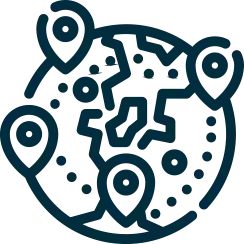
PPV spread across most of Europe by the 1970s. In the late 1990s, PPV had spread to many other countries in the eastern hemisphere and then was first detected in Chile in 1992. The first documentation of the disease in the United States was in Pennsylvania in 1999. By 2006, there were reports of the disease in New York and Michigan. The D strain was originally isolated in France.
